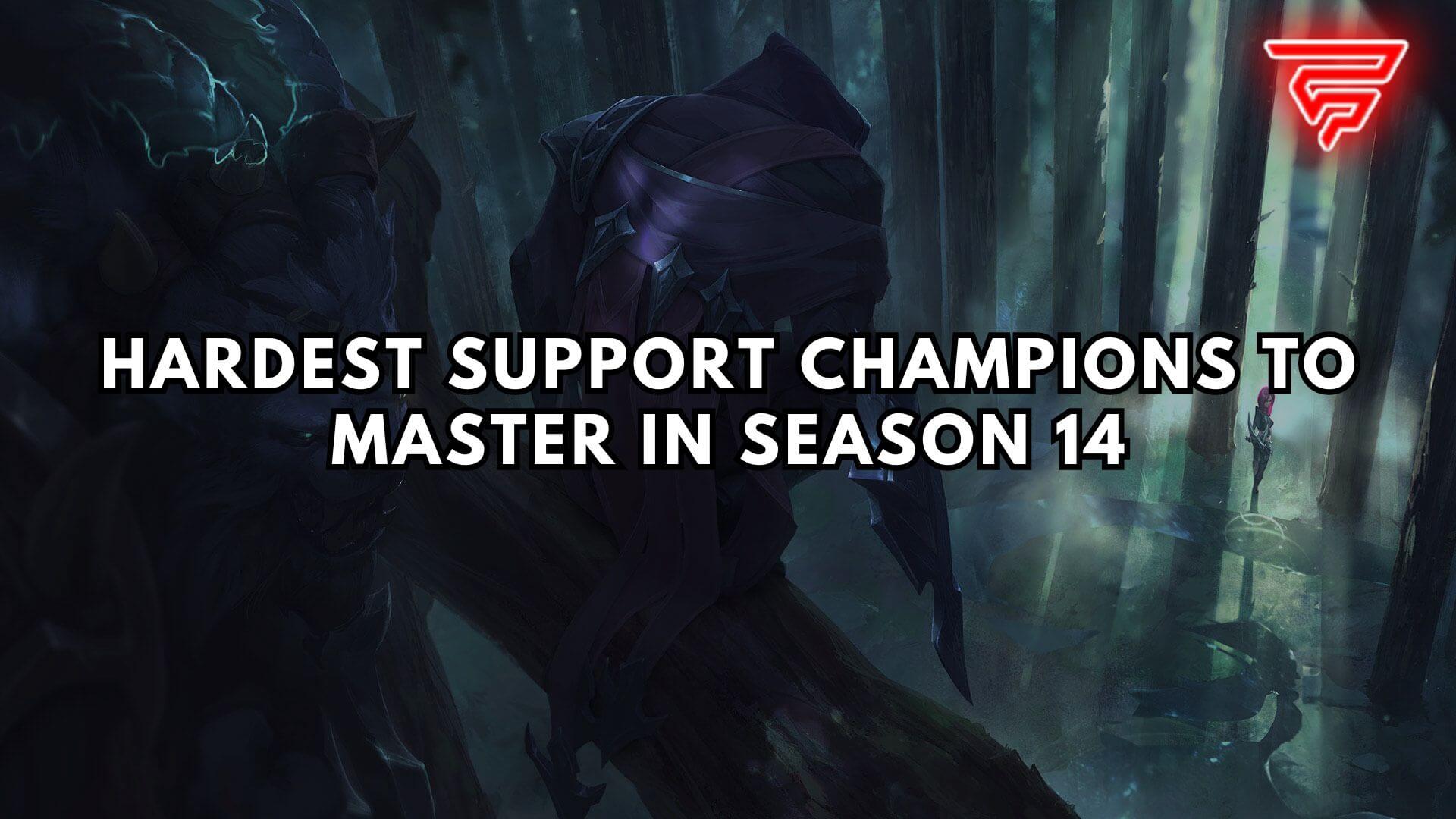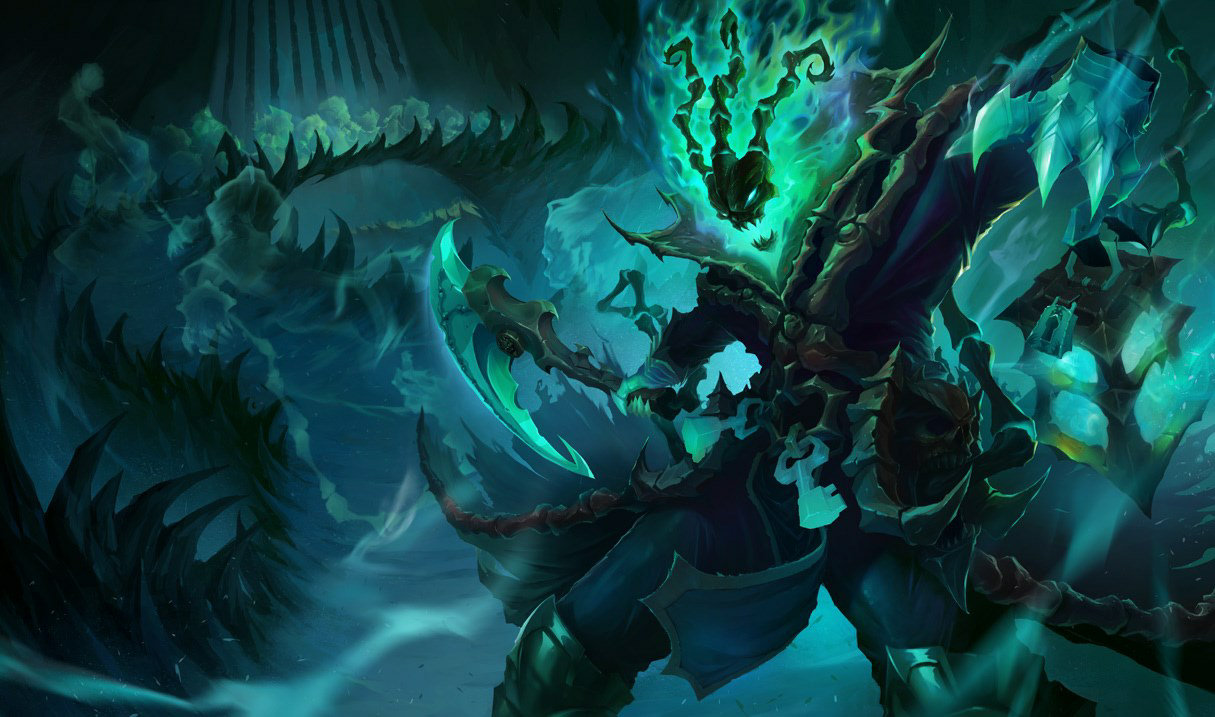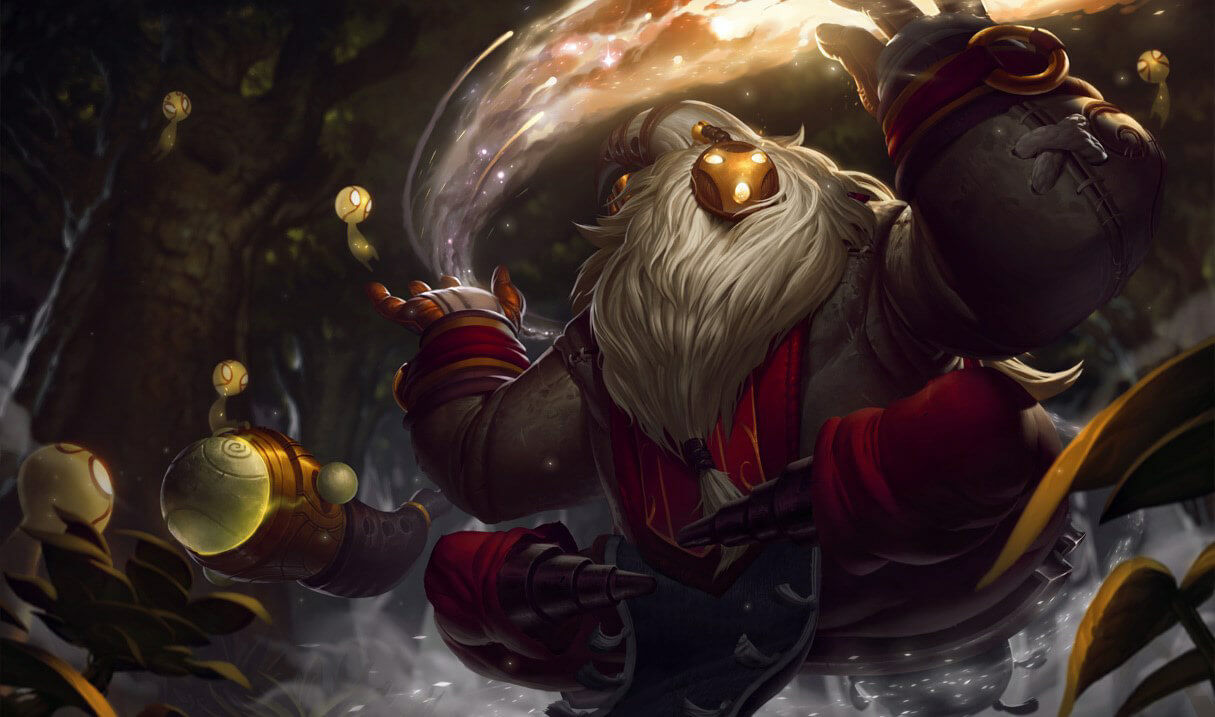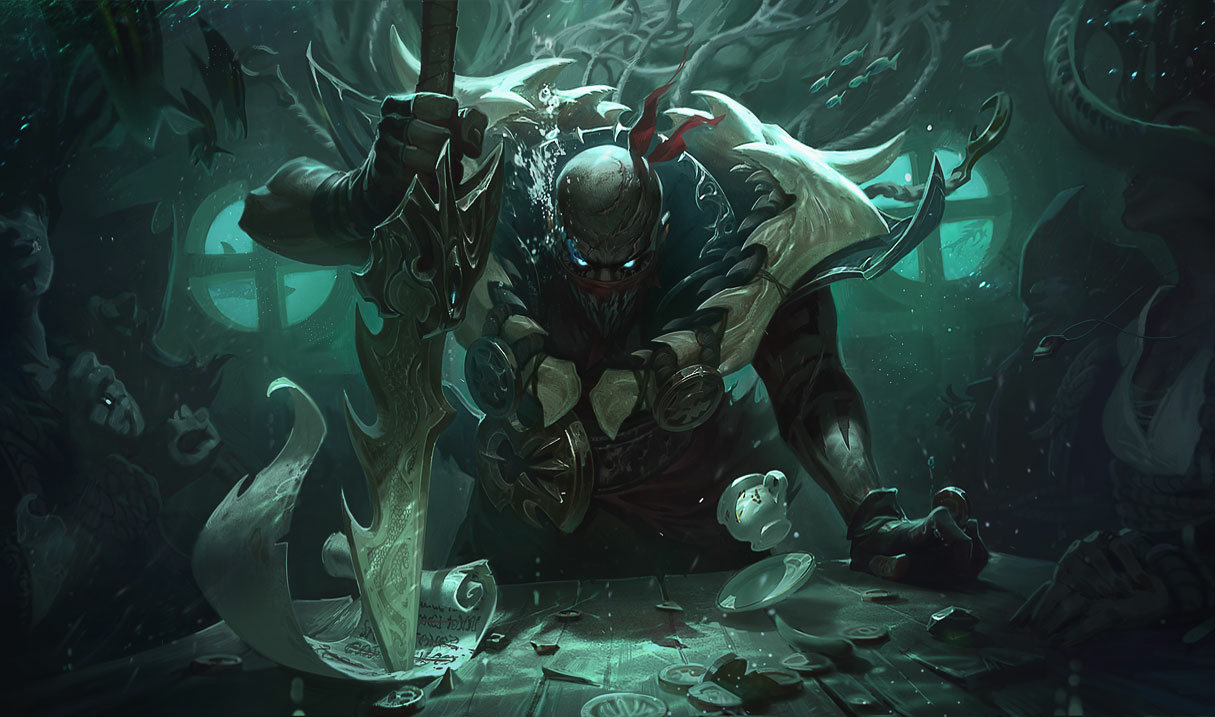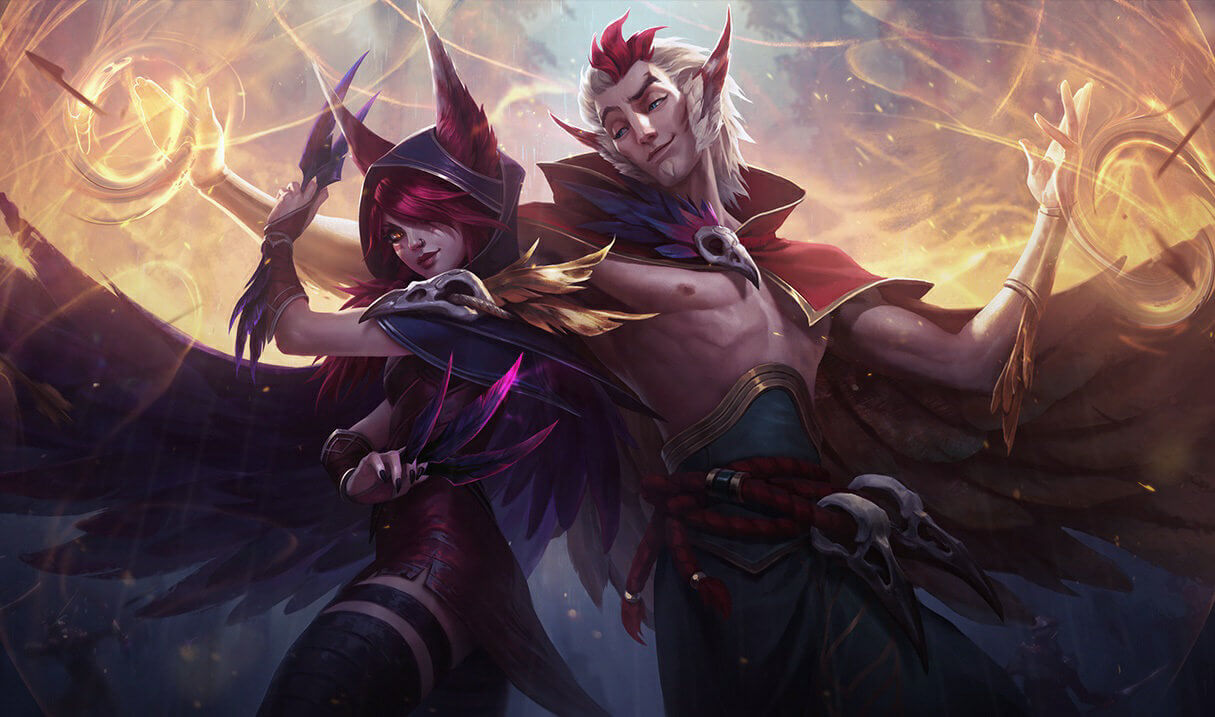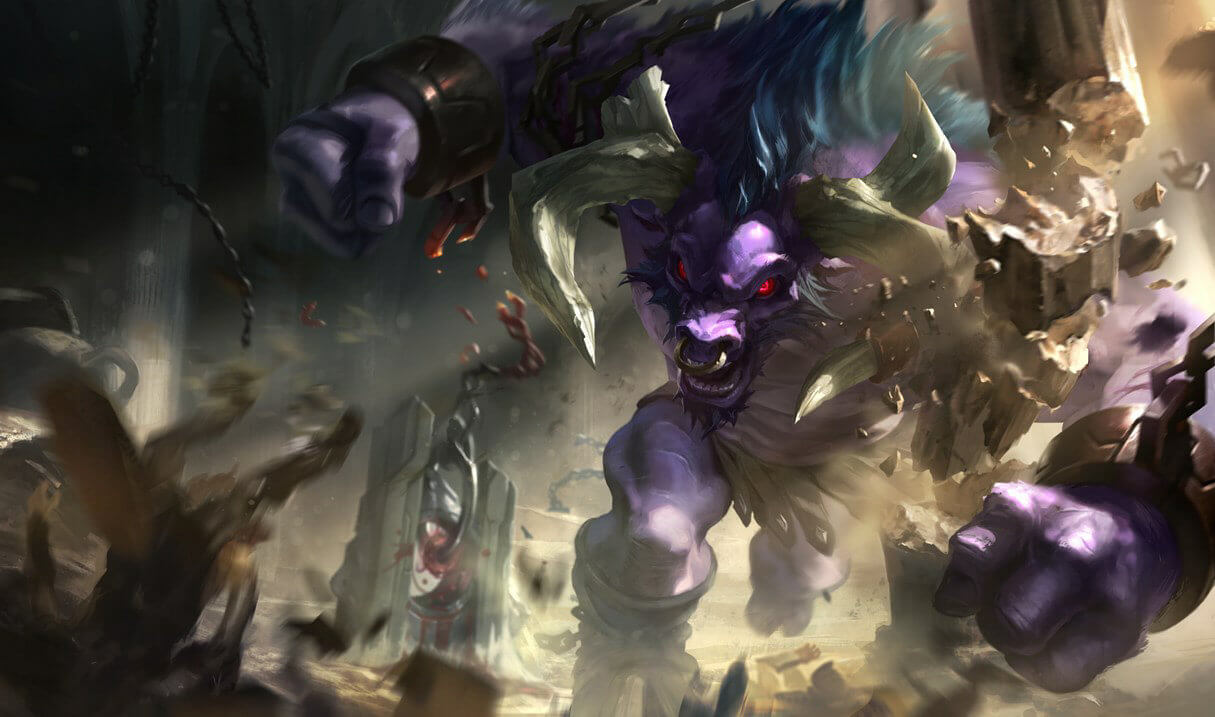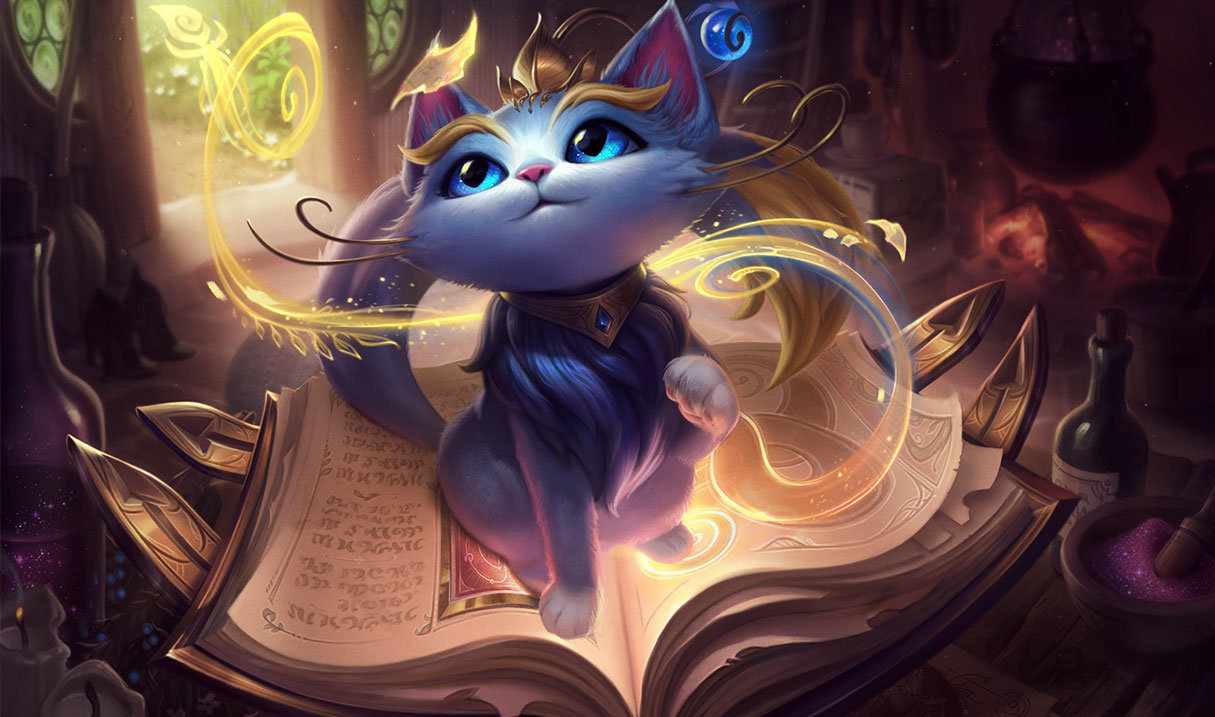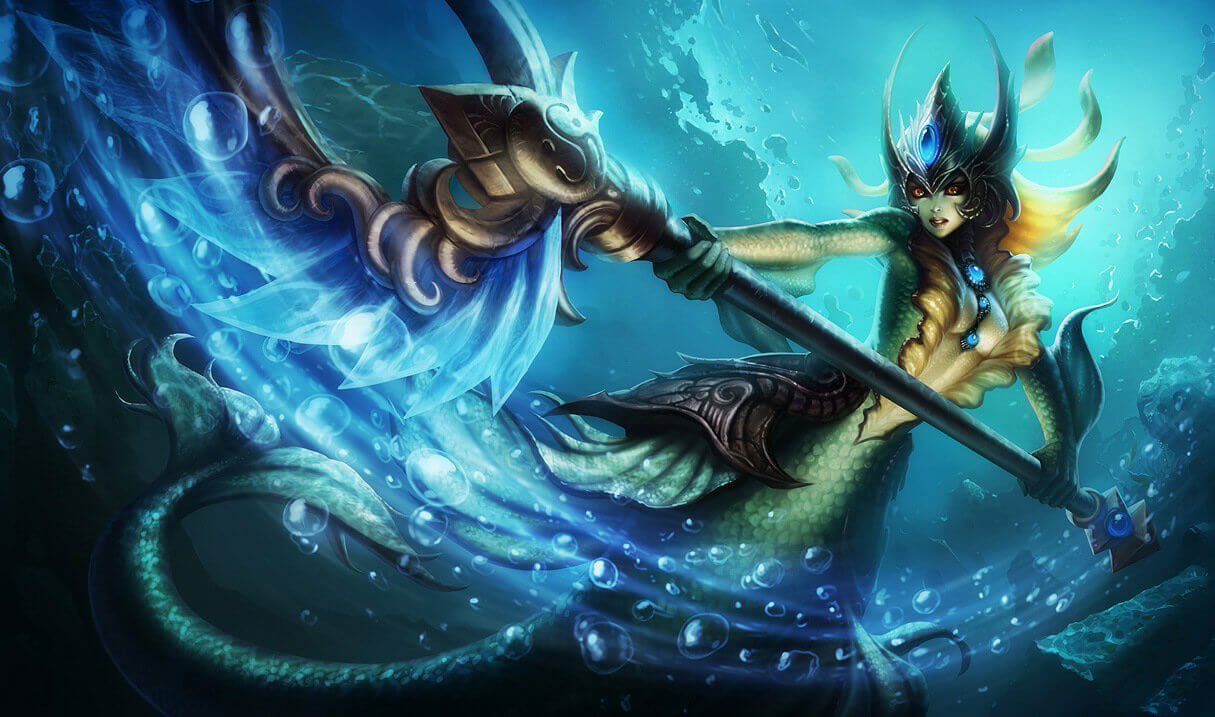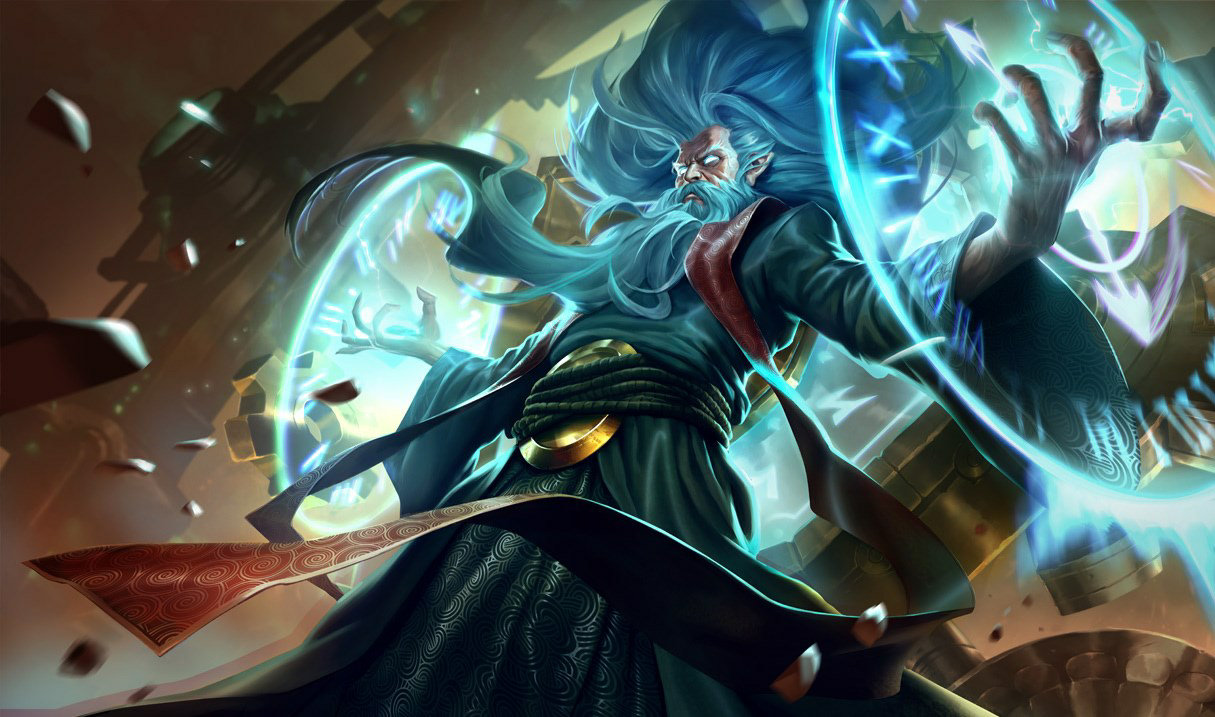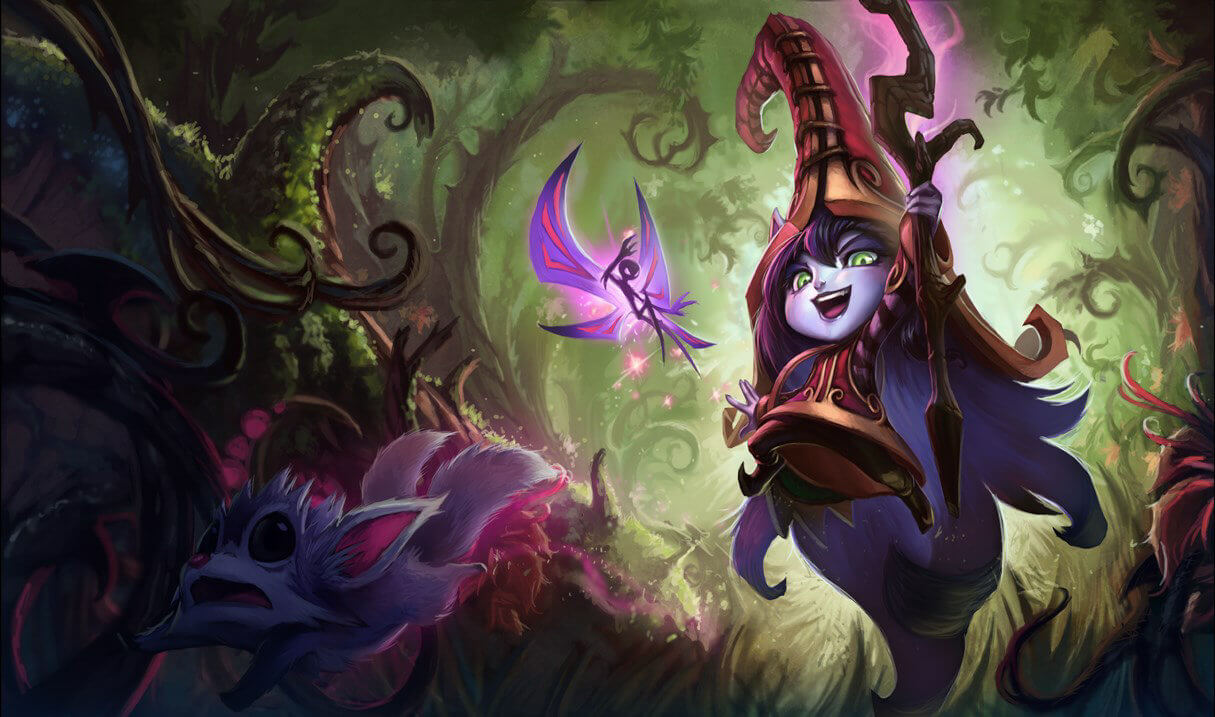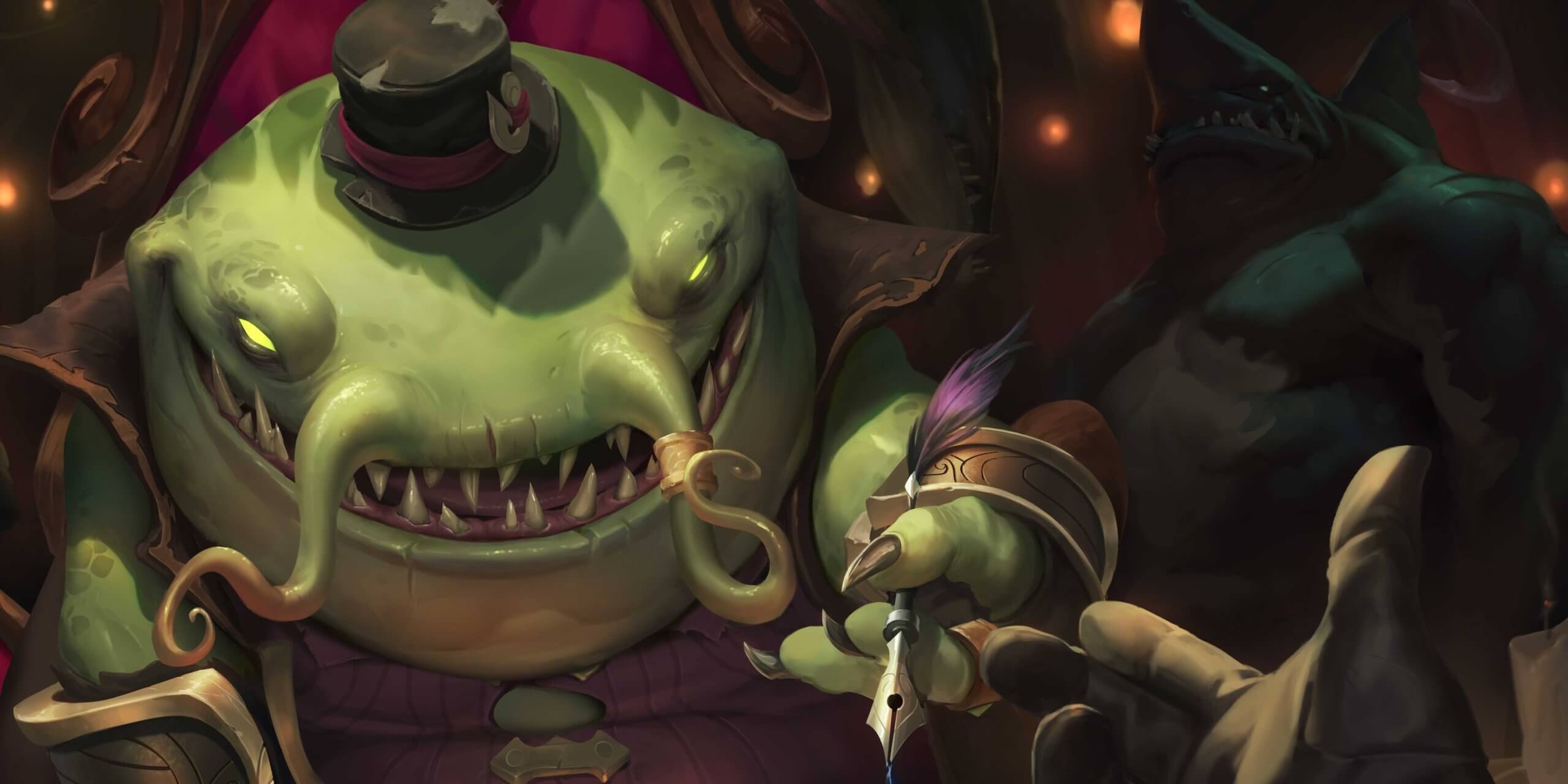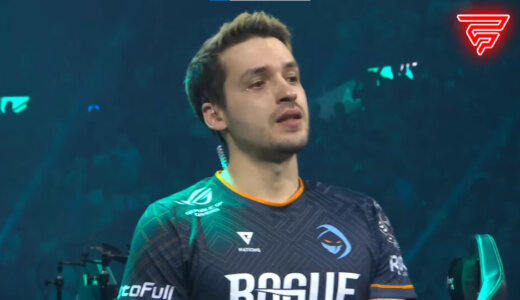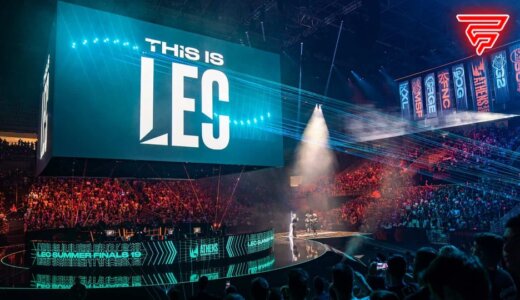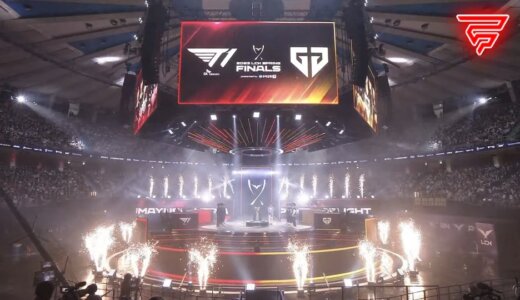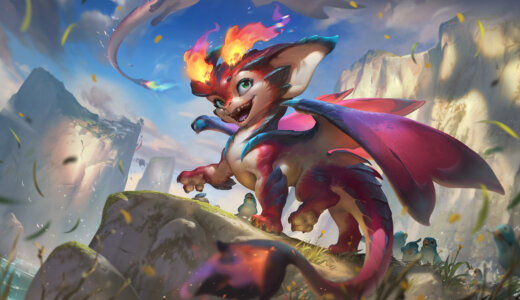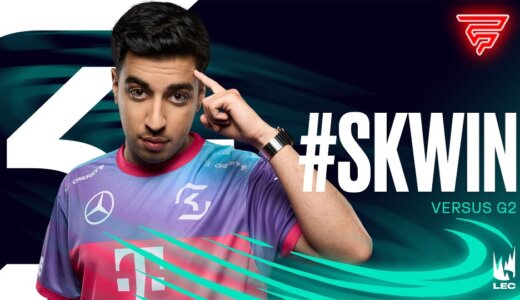The support role stands as a cornerstone of team strategy and success.
As we venture into Season 14, the landscape of support champions undergoes continual shifts, presenting challenges and opportunities for players.
Let’s explore the hardest support champions to master in Season 14, offering detailed insights into their unique playstyles, strengths, and areas where they require a skilled hand.
Hardest Support Champions to Master in Season 14
Diving into the heart of strategic gameplay, we’re about to explore the top 10 hardest support champions in League of Legends. Each champion demands a unique blend of skill, timing, and game sense, challenging players to master their complex abilities for team success.
1. Thresh
Thresh is like a Swiss Army knife for support players. He has a tool for almost every situation. His primary move is a hook that can pull enemies towards him.
He also has a lantern that can save teammates from tricky situations. His ultimate creates walls that slow and damage enemies.
To play Thresh well, you must be accurate with your hook, smart about when to use your lantern, and know how to block enemies with your walls.
2. Bard
Bard is unique because he roams around the map a lot. He collects chimes that make him stronger and has a magical journey ability that creates portals.
His ultimate can freeze everyone in an area, friend or foe. Playing Bard well means you must be good at deciding when to leave your lane to collect chimes, using your portals cleverly, and knowing the best time to use your ultimate.
3. Pyke
Pyke is a support that plays like an assassin. He can turn invisible and dash around, making him slippery and hard to catch. His ultimate is a decisive move that can execute low-health enemies.
To be good at Pyke, you must be sneaky, pick the right moments to attack, and use your ultimate at the perfect time to finish off enemies.
4. Rakan
Rakan is all about moving fast and starting fights. He can dash to friends and enemies, shield his allies, and charm many enemies with his ultimate.
Mastering Rakan means you need to be great at using your dashes to dodge danger and start fights, protecting your teammates, and catching enemies off guard with your ultimate.
5. Alistar
Alistar is a tough cow who can knock enemies into the air and headbutt them away. He’s excellent at protecting his team and starting fights.
To play Alistar well, you must time your knock-up and headbutt perfectly, know when to go in and start a fight, and when to stay back and protect your friends.
6. Yuumi
Yuumi is a magical cat who attaches to her teammates. She doesn’t need to move around much herself, but she needs to decide when to detach to do certain things. Her ultimate shoots out waves that can root enemies.
Playing Yuumi well means you need to choose the best times to detach and reattach, use your healing and rooting abilities wisely, and aim your ultimate to catch as many enemies as possible.
7. Nami
Nami is a mermaid who controls water. She can trap enemies in a bubble, heal friends, and create a giant wave.
To be good at Nami, you need to be great at aiming your bubble to catch enemies, deciding when to heal or attack with your water abilities, and using your giant wave in big fights.
8. Zilean
Zilean is an old wizard who can control time. He can speed up friends, slow down enemies, and place bombs that explode after a short time.
His ultimate goal is to bring a teammate back to life. Mastering Zilean means you must be good at placing your bombs to hit enemies, deciding when to speed up or slow down, and using your ultimate at just the right moment to save a teammate.
9. Lulu
Lulu is a whimsical fairy who can turn enemies into harmless creatures, shoot out damaging fairies, and make her allies bigger and stronger.
Playing Lulu well involves knowing when to use your abilities to attack or defend, turning the right enemy into a harmless creature at the right time, and using your ultimate to save allies or help them in fights.
10. Tahm Kench
Tahm Kench is a giant, formidable creature who can swallow friends to protect them or enemies to spit them out in the wrong places.
He’s good at taking a lot of damage and disrupting enemies. To play Tahm Kench well, you must decide when to swallow friends or enemies, position yourself well in fights, and use your abilities to disrupt the enemy team.
The Role of Support in LoL
Support champions play a vital yet often underappreciated role. These hardest support champions are the team’s backbone, providing essential assistance that can make or break a game.
While not always highlighted in the scoreboards, their impact is undeniable in strategic gameplay.
The Foundation of Team Success
Supports in League of Legends do much more than just aid the ADC (Attack Damage Carry). In the game’s early stages, their role is multifaceted and crucial for setting the tone of the match.
They ensure their ADC can farm safely, grow in strength, and be ready for mid to late-game battles.
This involves a delicate balance of aggression and defense, knowing when to engage the enemy and when to provide cover for their ADC.
Masters of Crowd Control
One of the critical tools in a support’s arsenal is crowd control. This can include abilities that stun, slow, or otherwise hinder the movements and actions of enemy champions.
By using these skills effectively, supports can prevent enemies from harming their ADC, disrupt enemy plans, and even set up kills.
Mastering crowd control is about timing and anticipation, understanding the flow of battle, and recognizing opportunities to swing the momentum in your team’s favor.
Healers and Protectors
Many support champions come equipped with healing abilities or protective spells. These can range from direct heals that restore health to shields that absorb incoming damage.
The art of healing and shielding is more than just reacting to enemy attacks. It’s about predicting where and when the team will take damage and proactively using abilities to mitigate this.
A well-timed heal or shield can differ between a teammate surviving a skirmish or being sent back to respawn.
Vision Control
Another critical aspect of the support role is vision control. This involves placing wards (small totems that reveal a portion of the map) to monitor enemy movements and provide valuable information to the team.
Reasonable vision control can prevent ambushes, secure objectives like the Dragon or Baron Nashor, and give your team the upper hand in positioning.
It’s a game of information warfare, where knowing the enemy’s location and movements can lead to strategic plays and victories.
The Game Changer
While the support’s role is most prominent in the early game, their impact continues throughout the match.
As the game progresses, supports must adapt their playstyle. This might mean protecting the most valuable team member, which isn’t always the ADC, engaging in team fights, or providing crucial crowd control and healing during critical moments.
The best supports understand the dynamics of each game and adapt their strategies accordingly.
Conclusion
Season 14’s hardest support champions offer diverse playstyles and challenges.
From the game-changing hooks of Blitzcrank to the strategic roaming of Bard, mastering these champions requires not only mechanical skill but also a deep understanding of League of Legends’ broader strategic elements.
Whether climbing the ranked ladder or simply looking to enhance your gameplay, delving into the complexities of these supports promises a rewarding journey.
